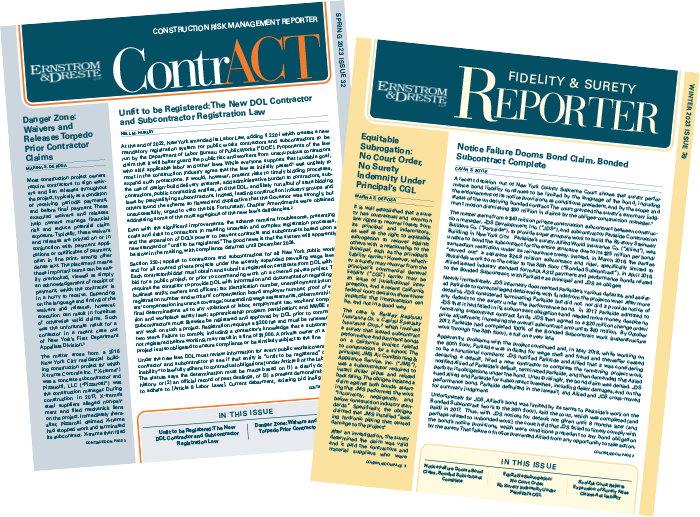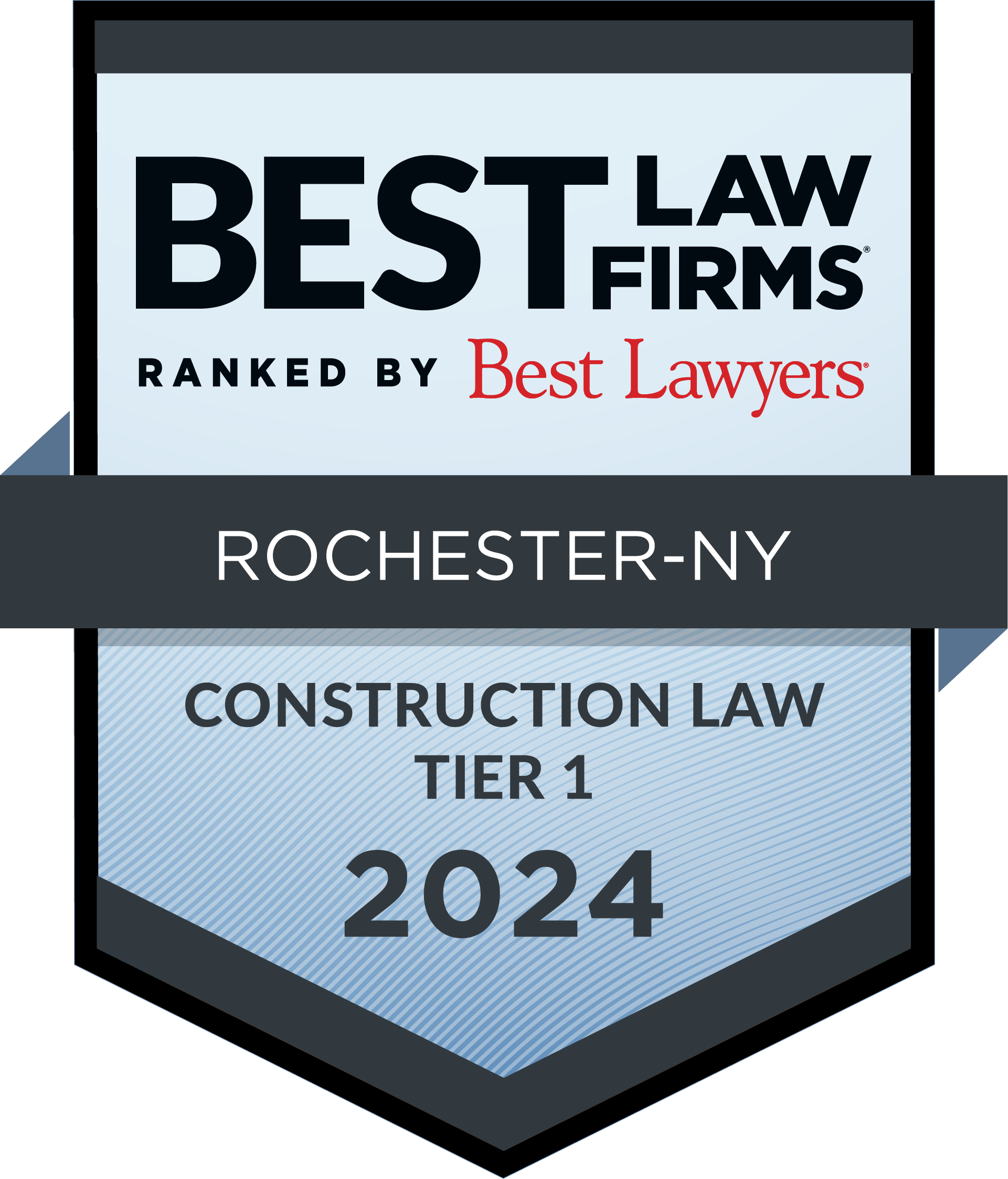Article by: Nell M. Hurley
A surprising appellate decision out of New York City’s First Department late last year is raising concern among construction lawyers and contractors alike. The brief opinion held that there was no mechanic’s lien for scaffolding and a sidewalk shed, finding that those items were not for the “permanent improvement” of real property within the meaning of the Lien Law, and vacating the lien.1 Scratching your head? You are not alone.
The matter arose out of a contract for façade repair work on a building required by New York City’s Local Law 11. Included in the contract was the provision of scaffolds and a sidewalk shed to facilitate the façade work and to enable performance without endangering the public. The general contractor subcontracted the scaffolding scope to Intersystem S&S Corp. (“Intersystem”). This included initial installation by Intersystem, and monthly rental for the duration of the project. The building’s owner made progress payments for project work to the general contractor, apparently including for the scaffolds and shed. More than a year later, the general contractor was replaced by another company that completed the façade work. Intersystem then said it had not been paid, and filed a mechanic’s lien against the property.2
Following efforts to obtain a proper itemized statement of lien from Intersystem, the owner petitioned to vacate the lien, arguing that the lien was untimely filed and that the scaffolding and shed were not improvements under the Lien Law. The lower court granted the petition without stating its reasoning. Intersystem appealed, and the appellate court affirmed the vacatur.
While conceding that the scaffolds and sidewalk shed were necessary for the completion of the contract for façade repairs, the appellate court instead relied upon the nature of the scaffolds and shed as temporary structures to conclude that they did not qualify as “permanent improvement[s]” as required by the Lien Law. The court stated:
“…the structures themselves effected no permanent change to the building. The project therefore falls outside the scope of labor and materials protected under the Lien Law.” (Emphasis added).
Section 2(4) of the Lien Law defines an improvement for which a mechanic’s lien may be filed to include:
“…demolition, erection, alteration or repair of any structure upon…real property and any work done upon such property or materials furnished for its permanent improvement…”
New York case law is robust regarding what is considered a permanent improvement, in particular within the context of fixtures and machinery, often turning on the issue of the intent of the parties as to permanency at the time of installation.3 Under this strict analysis, the “project” of the scaffolds and shed is viewed separately from the contracted façade repairs, and fails to qualify.
But the court’s reasoning does not consider the scaffolding and shed as a component of the obviously permanent façade repair work which, under the statute’s language, could constitute “work done…or materials furnished for [the real property’s] permanent improvement [façade repair].”(Emphasis added). Perhaps even more importantly, the court’s analysis completely ignores the further provision of Lien Law § 2(4) which provides that improvement under the statute includes “the reasonable rental value for the period of actual use…of equipment…in connection with the…repair of any real property…” The scaffolds and sidewalk shed here should qualify for the lien under this language alone.
There is inherent tension in the Lien Law, as it is strictly construed (since it was created by statute in derogation of common law) and yet liberally applied (to achieve its purpose of security for contractors and laborers). Prior to this case, New York lien rights for scaffolds and sidewalk sheds was not specifically addressed, and this court’s strict construction may not be the final word. And while other appellate division courts are not bound by this First Department ruling, and could reach a contrary result, lower courts in other departments must follow it for now. As such, liens that claim for scaffold or shed costs on the face of the lien could be subject to immediate challenge in a summary discharge proceeding under Lien Law § 19(6). Liens for such costs already asserted in a lien foreclosure action, or as part of a larger overall lien, could potentially be reduced at trial or on motion. The decision’s focus on the items’ temporary character as determinative could also spell future trouble for other materials or equipment that are not specifically incorporated into a permanent improvement.
- W 54-7 LLC v Intersystem S&S Corp., 210 AD3d 454 [1st Dept 2022].
- There may have been nothing due to the general contractor at the time Intersystem’s lien was filed, an additional basis for vacatur apparently not addressed.
- The court relied on cases that vacated liens for modular workstations and a rooftop cogeneration system, for example, which turned on the parties’ intent.




